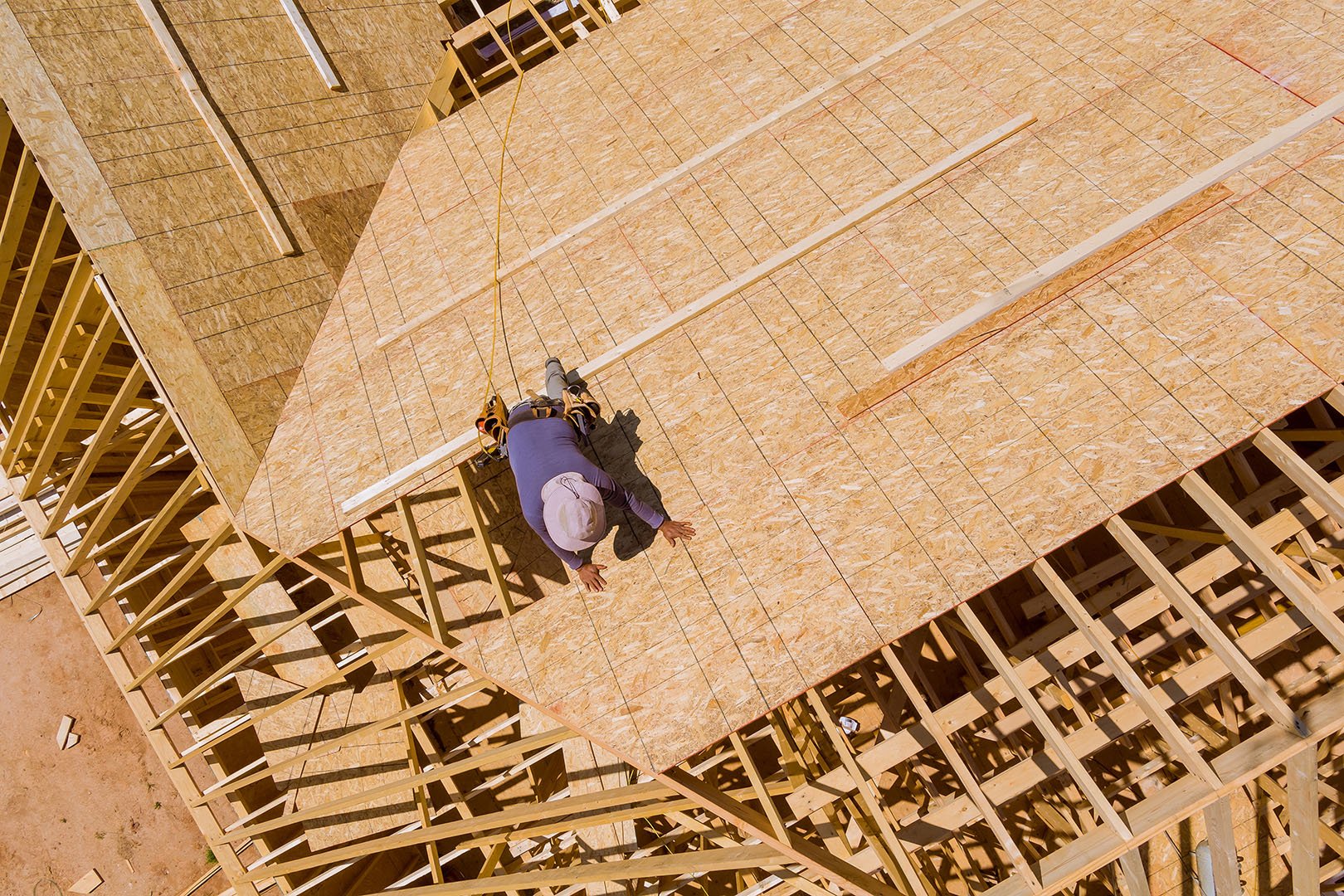Ever wondered what supports your roof beneath the shingles? That hidden layer underneath is roof sheathing — a critical component of your roofing system. Acting as the structural base for everything from shingles and skylights to gutters and fascia, roof sheathing plays a vital role in your home’s stability, energy efficiency, and overall protection.
At Jack C. Wilson Roofing Co., we’ve been protecting Jacksonville homes since 1946. As a proud, family-owned business, we never use subcontractors — our trusted roofing installers are long-time team members who take pride in their work. In this guide, we’ll break down what roof sheathing is, why it matters, and how choosing the right type can make a lasting difference for your home.
What is Roof Sheathing?
Roof sheathing is the layer of boards or panels installed directly over the rafters and beneath your roofing materials, such as shingles or tiles. It forms the foundation of your roof, creating a stable, solid surface for everything above it to securely attach.
Understanding roof sheathing is crucial for homeowners because it plays a key role in your roof’s structural integrity. It helps distribute weight evenly, supports roofing materials, and prevents issues like sagging or shifting. Without proper sheathing, your roof is far more vulnerable to leaks, structural damage, and even collapse.
The type and condition of your roof sheathing can also affect how well your home stands up to weather conditions like wind, rain, and snow. By knowing the purpose and importance of this hidden but vital layer, you can make smarter choices about roofing materials, maintenance, and when it’s time to call in a professional.
Why is Roof Sheathing Important?
Understanding the importance of roof sheathing empowers homeowners to make informed decisions about materials, installation methods, and maintenance. Proper roof sheathing is able to:
Provide structural support
Roof sheathing forms a stable platform between the framing and roofing materials, giving shingles and tiles the support they need to stay secure. It distributes weight across rafters and trusses, helping prevent sagging or collapse — especially in climates with heavy loads like snow or debris.
Enhance moisture protection
Properly installed sheathing adds a crucial layer of defense against moisture. It works with underlayment to help block water from seeping into your attic or living spaces. If the sheathing is damaged or rotting, it can compromise your roof’s ability to prevent leaks, leading to costly water damage.
Increase wind resistance
In areas prone to strong winds and storms, roof sheathing helps anchor roofing materials and keep them in place. It adds rigidity to the roof and minimizes the risk of shingles lifting or tearing off, preserving the roof’s integrity in extreme weather.
Support energy efficiency
While sheathing isn’t a direct insulator, it enhances the performance of attic insulation. A solid sheathing layer helps prevent air leaks, contributing to better temperature regulation inside your home, which can reduce heating and cooling costs throughout the year.
Maintain roof appearance and functionality
Well-installed sheathing ensures your roofing materials lay flat and look uniform. Without it, shingles or panels may appear uneven, leading to visual flaws, pooling water, and premature wear. Quality sheathing and proper installation supports both the aesthetic and functional performance of your roof.
What Materials are Commonly Used for Roof Sheathing?
Selecting the right roof sheathing material is a key decision that affects your roof’s strength, longevity, and cost. The most commonly used materials are plywood, OSB (Oriented Strand Board), and plank sheathing, which each have its own strengths and ideal applications.
Plywood
Plywood is a long-standing, reliable choice for roof sheathing. Made by bonding thin layers of wood veneer, it offers excellent strength, dimensional stability, and resistance to impact. It performs well in regions with heavy snow or high winds, making it a popular option for durability and structural support.
OSB (oriented strand board)
OSB is a cost-effective and widely used alternative to plywood. It’s manufactured by compressing wood strands and adhesives into large, uniform panels. While generally more affordable, OSB still offers good durability and strength, though it may be slightly more prone to moisture absorption if not properly sealed.
Plank sheathing
Plank sheathing uses solid wood boards (typically 1×6 or 1×8 inches) laid side by side. This was standard in older homes before sheet goods became popular. While rarely used in modern builds due to higher costs and longer installation times, it’s still common in historic homes or restoration projects where traditional materials are desired.
Is Roof Sheathing the Same as Decking?
Yes, roof sheathing and roof decking refer to the same element of your roofing system. While contractors may use the terms interchangeably, both describe the flat layer of material (plywood, OSB, or planks) installed over the rafters to support shingles and other roof coverings.
When professionals talk about a re-deck, they’re referring to replacing this sheathing during a roof replacement or major repair. Over time, roof decking can deteriorate due to moisture intrusion, pest damage, or simple aging.
Replacing damaged sheathing ensures your new roofing materials have a solid foundation to improve your home’s structural integrity and extend the life of your entire roof system.
Don’t Skimp on Proper Roof Sheathing — Call Jack C. Wilson Roofing Co. Today
Your roof is only as strong as the sheathing beneath it. Whether you’re planning a full roof replacement or need expert advice on a potential re-deck, trust the team that’s been serving Jacksonville since 1946. Call Jack C. Wilson Roofing Co. today to schedule your consultation and protect your home with proven, long-lasting solutions.


